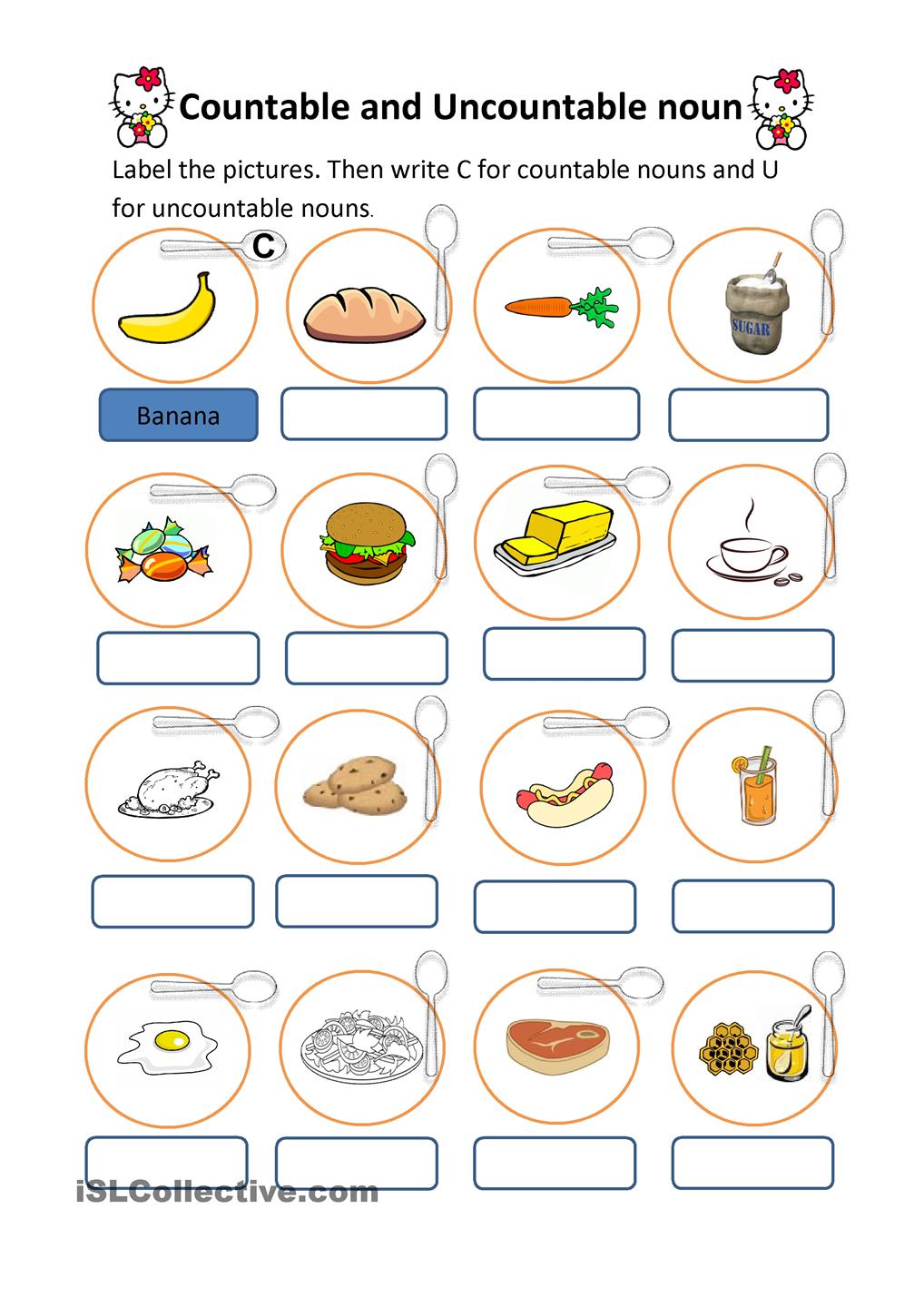
Countable And Uncountable Nouns Worksheets Samples
What Are Countable Nouns? Countable nouns (also known as count nouns) differ from uncountable nouns in that they: can be counted, can be preceded with the articles "a," or "an," or a number, and usually have singular and plural forms.. Sloane was looking for a jacket.An apple a day keeps the doctor away.I read ten books this past summer.There were a total of 15 doctors at the national.

Countable Nouns
In English grammar, countable nouns are individual people, animals, places, things, or ideas which can be counted. Uncountable nouns are not individual objects, so they cannot be counted. Here, we'll take a look at countable and uncountable nouns and provide both countable noun examples and uncountable noun examples.
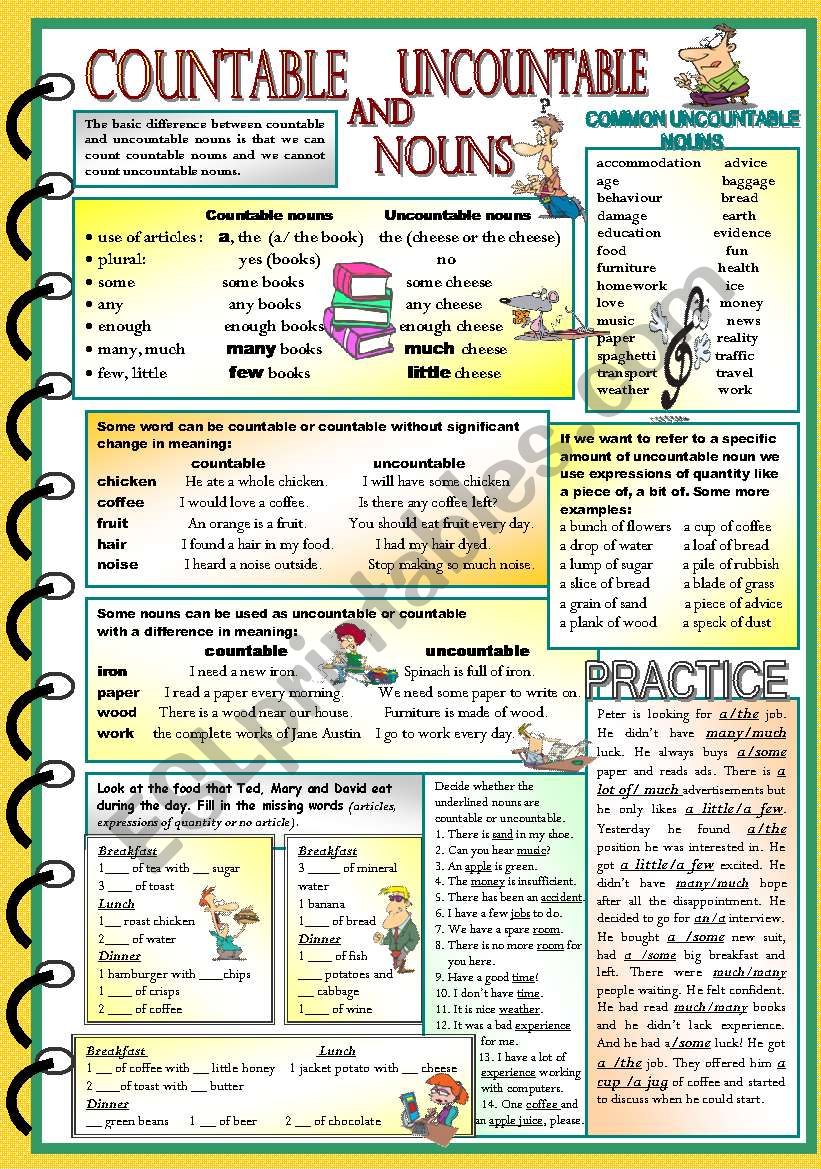
Countable and uncountable nouns ESL worksheet by ciortea
Countable (or count) nouns are words which can be counted. They have a singular form and a plural form. They usually refer to things. Most countable nouns become plural by adding an 's' at the end of the word. For example: chairs. students. Uncountable (or non-count) nouns are words which cannot be counted.
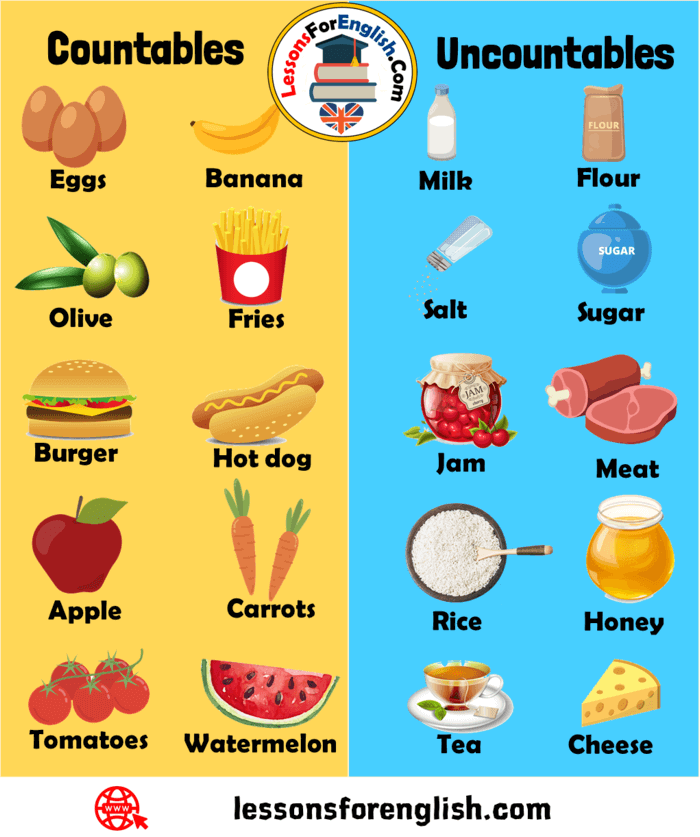
Countable and Uncountable Nouns List, 100 Countable and Uncountable
Countable nouns are nouns that are distinct and easily countable objects, people, animals, etc. Common examples of countable nouns are apples, houses, or dogs. If you can ask "How many ____ are there?" then you have a countable noun. Countable nouns have a singular and plural form. For example, I have one apple, but he has two apples .
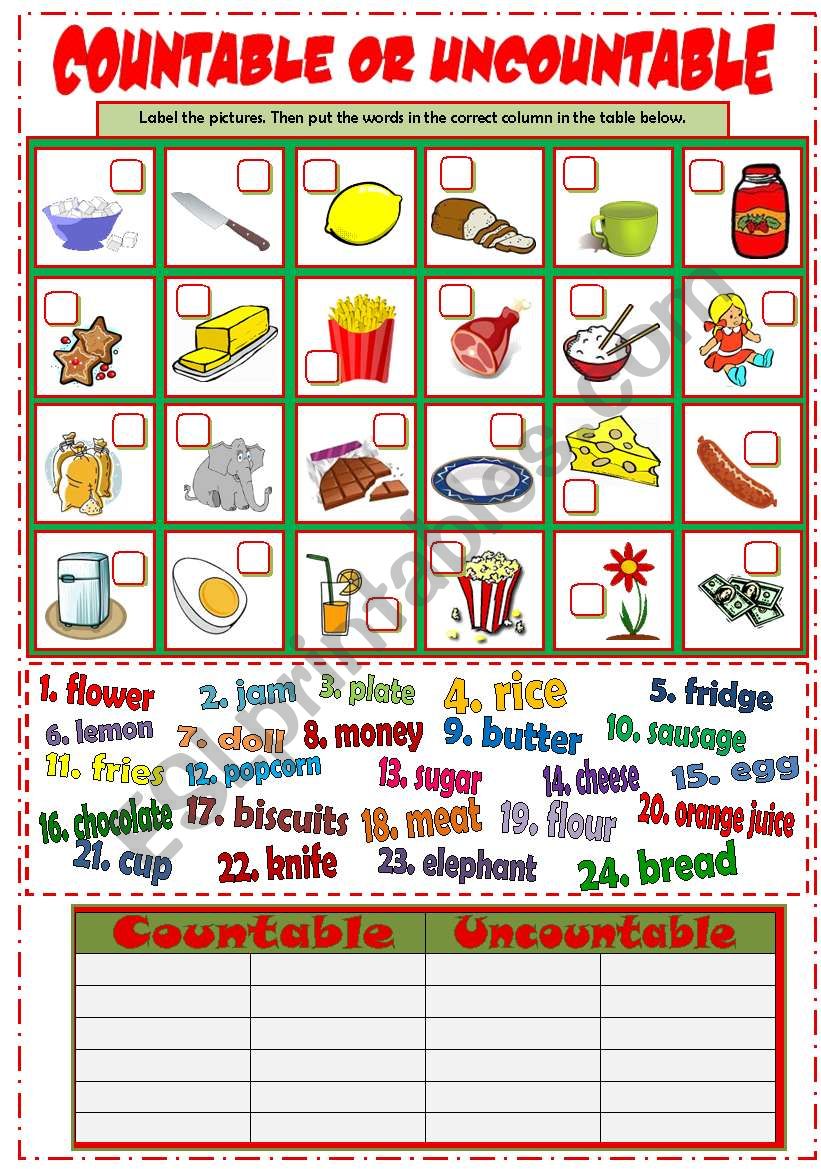
Countable And Uncountable Nouns Images 17 Worksheets On Countable And
Countable Nouns Countable nouns are the things that we can count. For example, one book, three chairs, one room, etc. Countable nouns can be singular or plural such as chair (singular), chairs (plural). Uncountable Nouns Uncountable nouns are the things that we cannot count. For example, sand, advice and yoga etc. These words are in singular form.
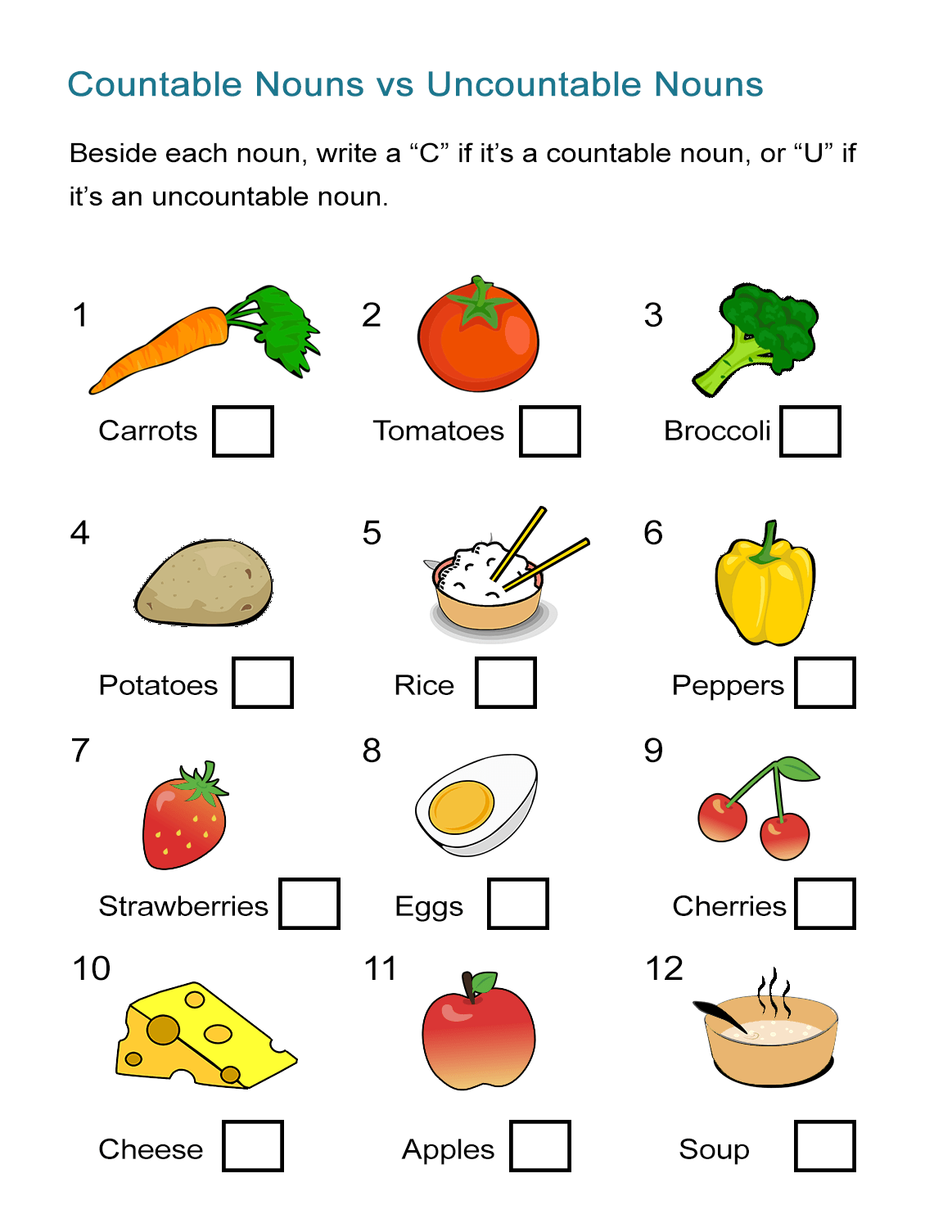
a an some countable uncountable nouns worksheet countable uncountable
A countable noun, according to the Cambridge Dictionary, is defined as "a noun that has both a singular and a plural form and names something that can be counted because there can be one or more of it". The Macmillan Dictionary defines a countable noun as "a noun that has singular and plural forms.

Countable and Uncountable Nouns YouTube
Objects, ideas, and places can all be nouns. Every noun is either countable or uncountable. Countable nouns are nouns you can count, and uncountable nouns are nouns you can't count. Countable nouns can take the singular or the plural form of a verb. Uncountable nouns always take the singular form of the verb. Study the rules and examples below.

Countable and Uncountable Nouns Create WebQuest
Countable nouns can be counted, e.g. an apple, two apples, three apples, etc. Uncountable nouns cannot be counted, e.g. air, rice, water, etc. When you learn a new noun, you should check if it is countable or uncountable and note how it is used in a sentence. Countable nouns
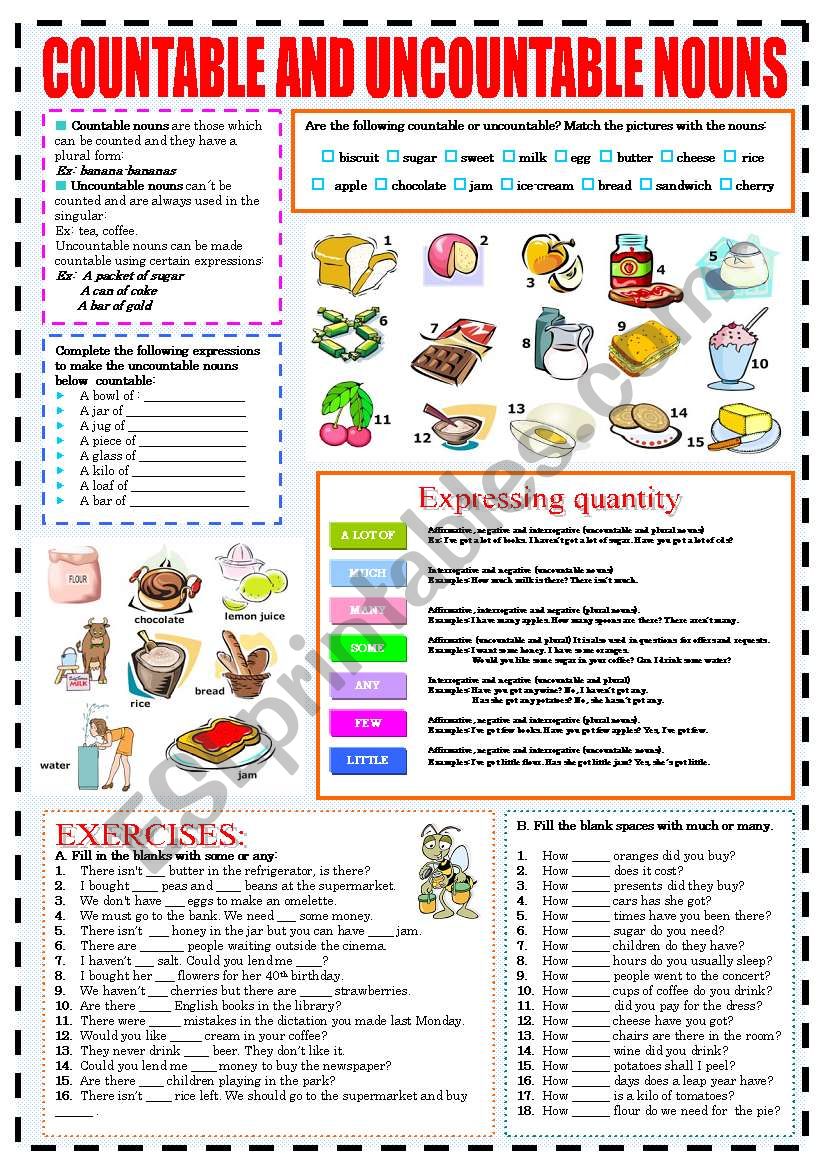
Exercises Of Countable And Uncountable Nouns Exercise Poster
Countable nouns refer to individual things and we can use them in the singular or plural (e.g. coin/coins ). Most nouns in the English language are countable. Uncountable nouns, also known as mass nouns, refer to things we consider a whole or mass and cannot be counted (e.g. money ). Many abstract nouns (e.g. happiness) are uncountable in English.

Tina's English class Grammar (2) Countable uncountable nous
Countable nouns can be either singular nouns or plural nouns. Countable nouns can use the articles a or an, and it makes sense to precede countable nouns with a number. Examples of countable nouns Many different nouns that refer to people, places, and things are countable nouns.
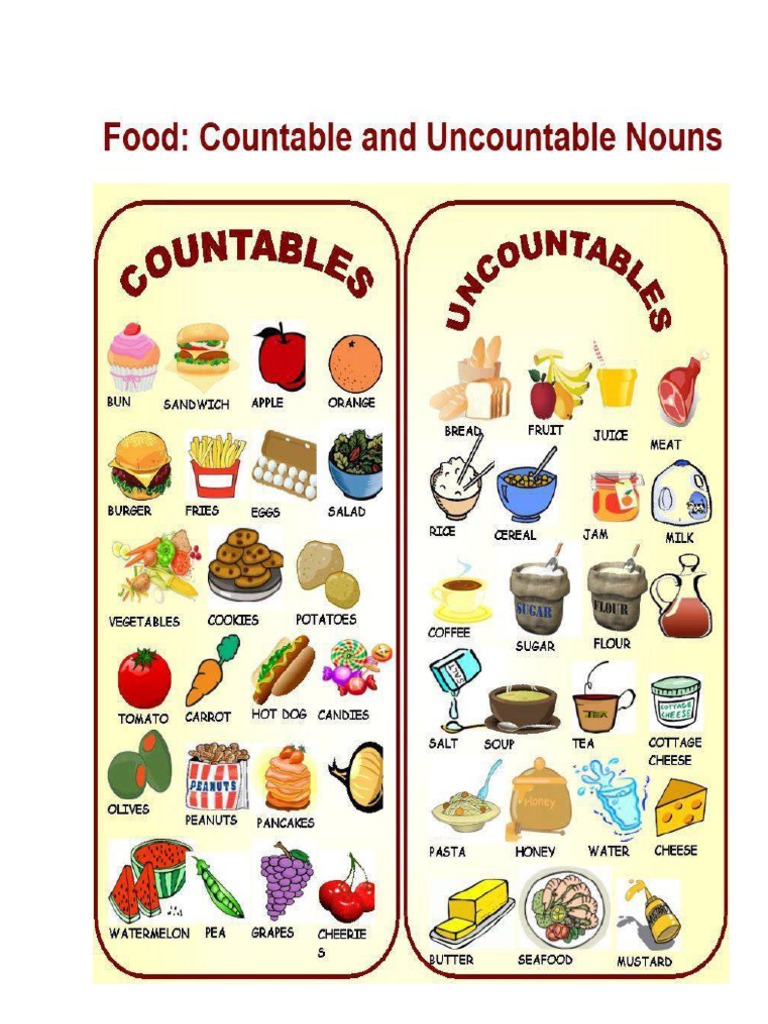
Countable And Uncountable Nouns Useful Rules Amp Examples 7esl Riset
To count or quantify an uncountable noun we use a unit of measurement - a measure word. For example, we cannot usually say "two breads" because "bread" is uncountable. So, if we want to specify a quantity of bread we use a measure word such as "loaf" or "slice" in a structure like "two loaves of bread" or "two slices of bread".
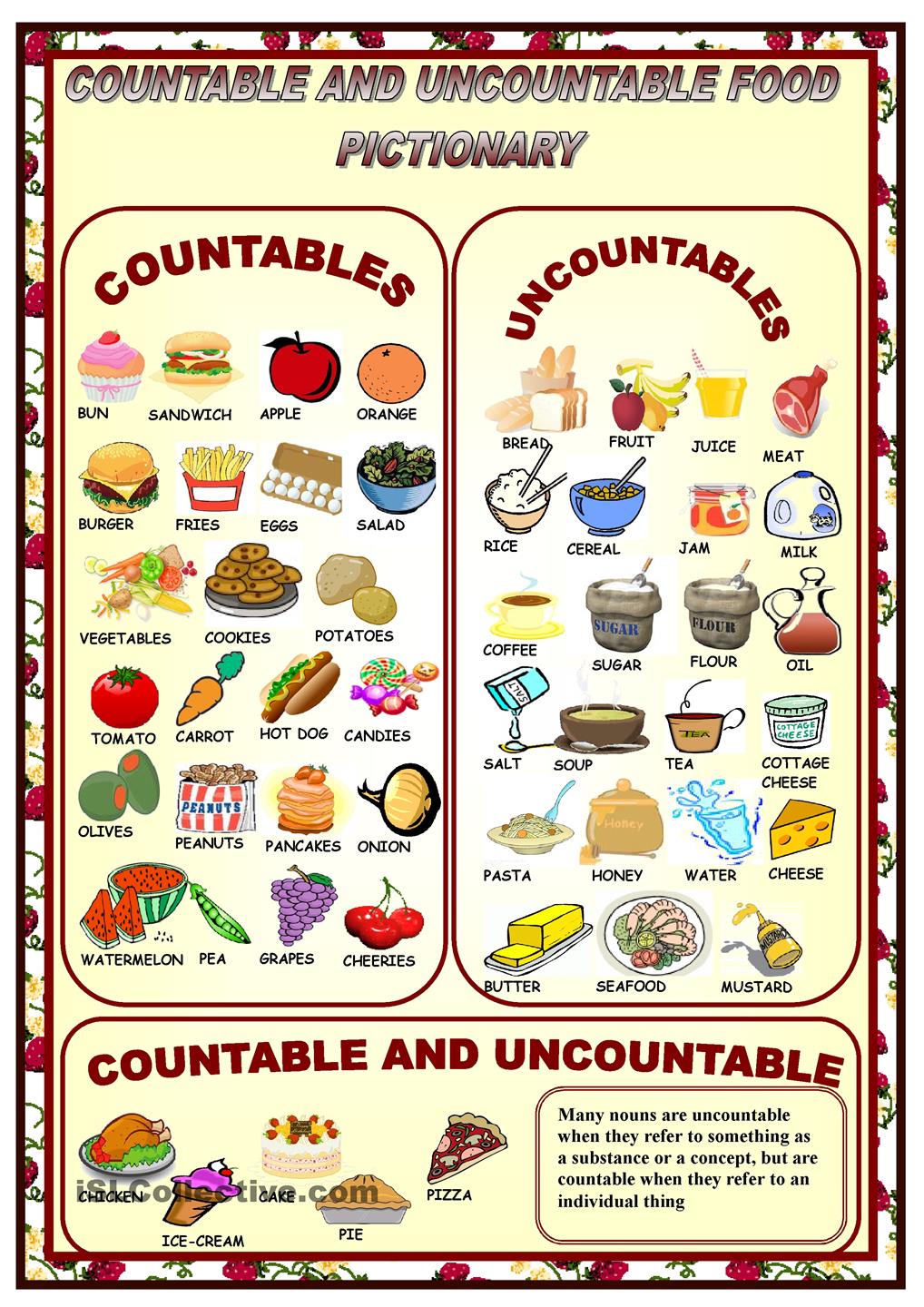
RainbowinLACOVA Countable and uncountable nouns
The major division of English nouns is into "countable" and "uncountable". Countable nouns are easy to recognize. They are things that we can count. For example: "pen". We can count pens. We can have one, two, three or more pens. Here are some more countable nouns: dog, cat, animal, man, person;
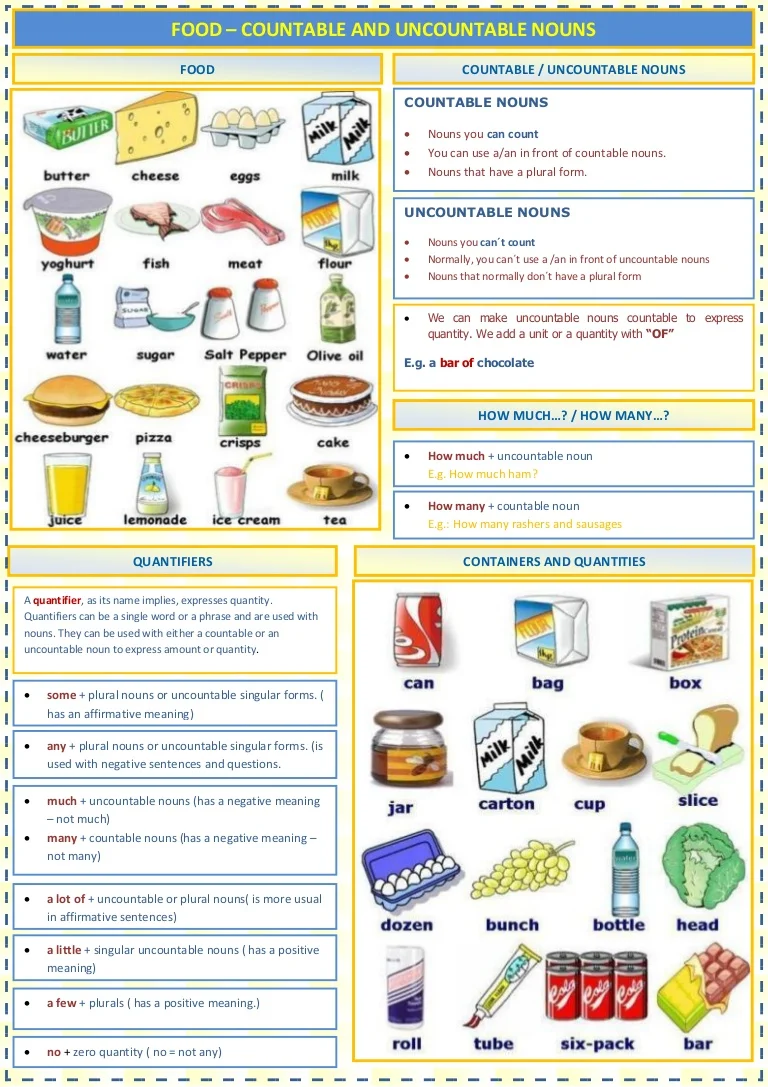
Countable & uncountable nouns
Why Countable Nouns Are Important. There are three noteworthy issues related to countable and non-countable nouns. (Issue 1) Use fewer with plurals and less with non-countable nouns. Use fewer when referring to people or things in the plural (e.g., soldiers, lawyers, dogs, pies, clouds).. A low voter turnout is an indication of fewer people going to the polls.
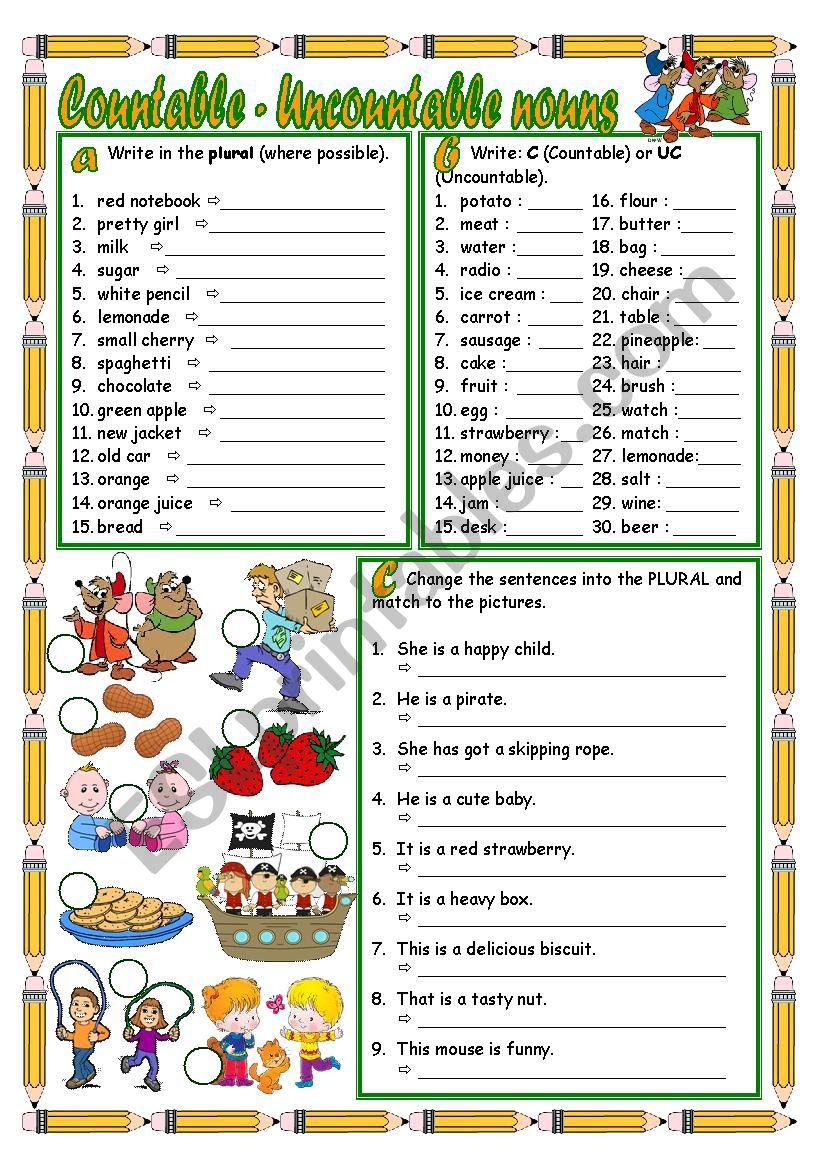
Countable And Uncountable Nouns With Their Rules Download Pdf Nouns Images
Uncountable nouns, also known as mass nouns or noncount nouns, refer to a mass of something or an abstract concept that can't be counted (except with a unit of measurement). In contrast, countable nouns can be counted as individual items.

COUNTABLEUNCOUNTABLE NOUNS Countable and uncontable nouns worksheet
Countable nouns Some nouns refer to things which, in English, are treated as separate items which can be counted. These are called countable nouns. Here are some examples: a car, three cars my cousin, my two cousins a book, a box full of books a city, several big cities Singular and plural Countable nouns can be singular or plural.
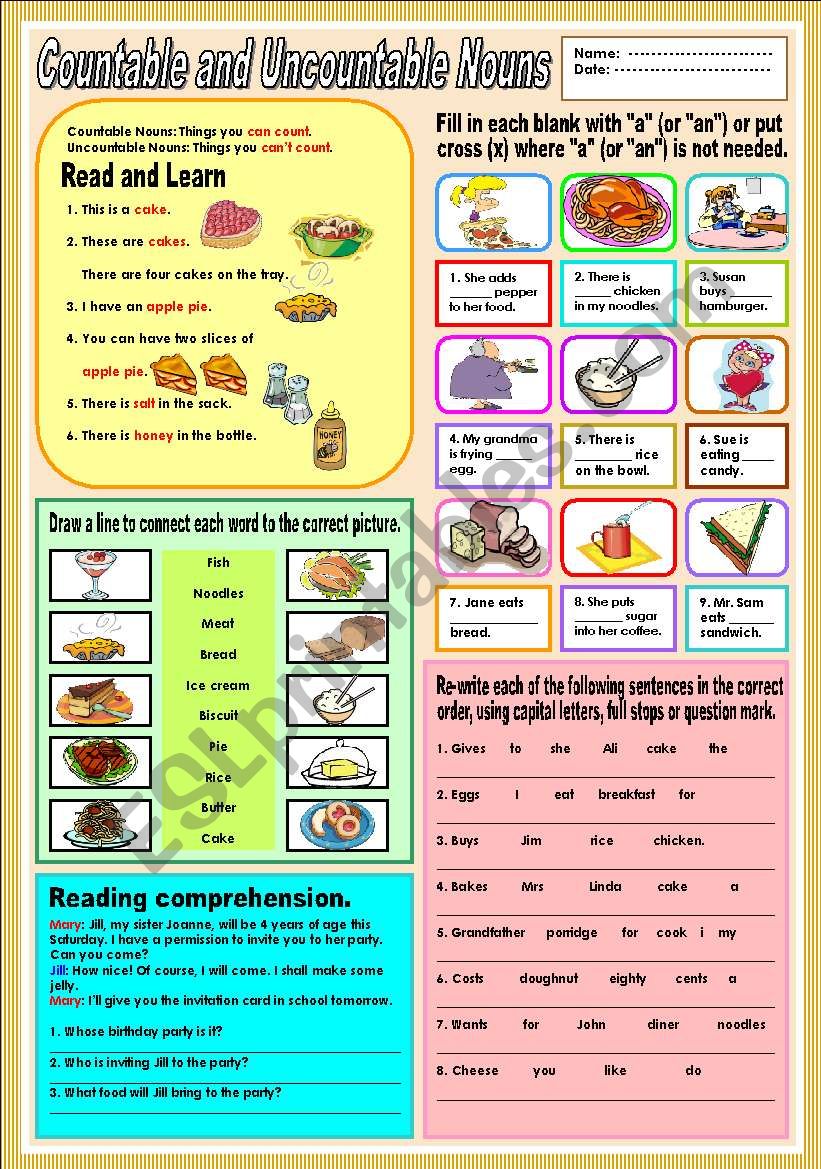
Countable and Uncountable nouns 3 ESL worksheet by Ayrin
Instructions 0:00 / 3:24 720p Transcript Some nouns in English are countable - we can use them in singular and plural forms. Some are uncountable - they only have one form. We often use a/an with singular countable nouns and some with plurals. We can also use some with uncountable nouns. What are examples of countable nouns? Here are a few: